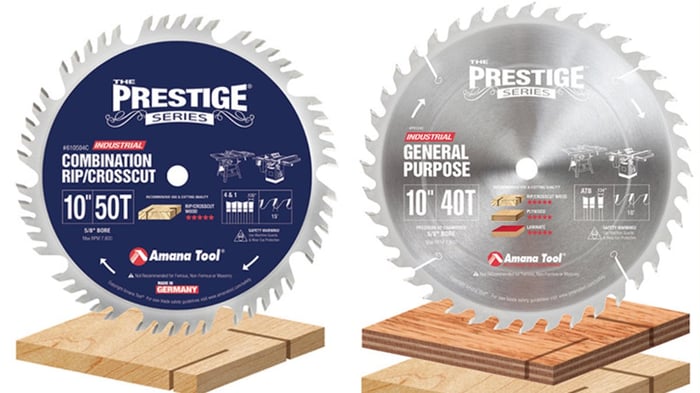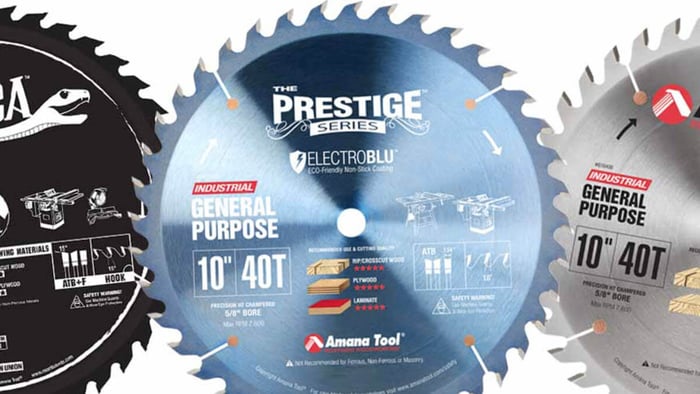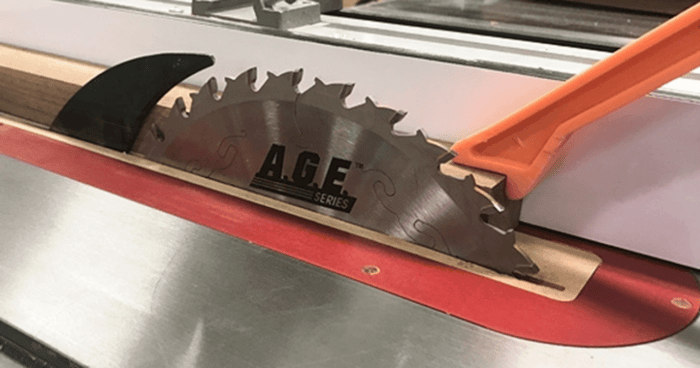
Debunking Common Saw Blade Myths
When it comes to saw blades, it’s easy to get caught up in the misinformation that circulates in the woodworking community. Falling for these saw blade myths can lead to costly mistakes and frustrating experiences, especially for DIY enthusiasts and professionals alike.
For example, one of the most common myths is that more teeth on a blade always guarantee better cuts, or the belief that all saw blades are created equal. It’s essential to dispel these misconceptions to improve your cutting performance and efficiency.
This article will debunk five prevalent saw blade myths, equipping you with the knowledge to choose the right blade and maintain it properly, ensuring optimal results every time.
What are Saw Blade Myths?
Saw blades are vital tools in both woodworking and metal cutting, yet there are numerous myths about their performance and features. Addressing these "Saw Blade Myths" is crucial to avoid subpar cutting performance, improper blade selection, and even potential safety hazards in your DIY projects.
Understanding the realities of saw blades can significantly boost your cutting efficiency, extend the lifespan of your blades, and help you achieve better results in all your woodworking or metalworking endeavors. Let’s dive into some of the most common myths about saw blades, the different types available, and how they can influence your projects.

High tooth count, modified triple chip (MTC) grind, and a 2° negative hook on our Non-Melt, Plastic Cutting Saw Blades make chip-weld a thing of the past.
Myth #1: More Teeth Means Better Cutting
A widespread myth is the belief that more teeth on a saw blade automatically lead to better cutting performance. While it’s true that a higher tooth count can improve cutting accuracy, it doesn’t guarantee superior performance in every scenario.
In reality, the effectiveness of a saw blade depends more on factors like tooth geometry, width, and the specific application, rather than just the number of teeth.
Explanation and Truth Behind this Myth
The myth that more teeth always result in better cutting can be debunked by examining how tooth geometry, edge retention, and kerf width interact. A blade’s design and intended use, such as whether it's meant for crosscutting or ripping, significantly influence its effectiveness.
For example, a rip saw typically has fewer teeth and a wider kerf, allowing for faster material removal in softwoods and smoother cuts with reduced drag. In contrast, a thin-kerf crosscut saw, with finely spaced teeth, is designed for precision and minimal waste, making it ideal for hardwoods where a clean finish is essential.
Tooth geometry—such as flat-topped or alternate top bevel—further enhances a blade's performance by affecting how it engages with the material. These variations highlight the importance of selecting blade features that align with your specific task, ensuring optimal cutting results across various woodworking projects.

Mamba Contractor Series by Amana Tool is specifically designed for contractors to provide faster & cleaner cuts.
Myth #2: All Saw Blades are the Same
Another common myth is that all saw blades are created equal, ignoring the critical differences between blade types and their specific applications.
In truth, saw blades are engineered for particular tasks, whether it’s crosscutting, ripping, or cutting non-ferrous materials. Understanding blade compatibility is essential for achieving optimal performance in any woodworking or cutting project.
Differences in Saw Blades and their Uses
Saw blades come in a variety of features and intended uses, categorized into crosscut blades, rip blades, and specialty blades designed for metal cutting or specific wood types. Understanding these distinctions is key to achieving optimal cutting performance and ensuring compatibility with different materials.
For example, crosscut blades have a higher tooth count and finer teeth, making them ideal for clean cuts across the grain. Rip blades, with fewer teeth and larger gullets, are better suited for tearing through lumber along the grain.
Specialty blades are tailored for specific materials, featuring designs optimized for tasks like metal cutting or working with laminate surfaces. By recognizing these differences, you can select the most suitable blade type for your projects, enhancing both accuracy and efficiency in your work.

The BLADECLEAN Blade and Bit Cleaning System is the quickest, safest, and most enjoyable way to clean your saw blades and router bits.
Myth #3: Sharpening a Saw Blade is a Waste of Time and Money
Some believe that sharpening saw blades is unnecessary, thinking it’s a waste of time and money. However, regular blade maintenance through cleaning and honing — not sharpening — is crucial to extending the lifespan of your blades and maintaining cutting efficiency.
Neglecting this maintenance can result in poor performance, higher costs, and a frustrating user experience.
Benefits of Regular Saw Blade Maintenance
Regular maintenance offers numerous advantages, such as improved cutting performance and enhanced blade quality over time. Rather than sharpening, which can alter the cutting angles and degrade blade performance, it’s better to focus on routine cleaning and honing.
Cleaning blades to prevent resin and debris buildup, along with conducting periodic performance tests, helps in assessing efficiency. Proper blade storage, away from moisture and extreme temperatures, also significantly extends their lifespan.
Implementing these maintenance practices safeguards your investment and ensures that each woodworking project is smooth and enjoyable.

Timberline Ti-Cut™ Saw Blades are very economical but feature large heat-treated carbide tips precisely ground for smooth cuts every time.
Myth #4: Expensive Saw Blades are Always Better
The belief that more expensive saw blades are automatically better can mislead woodworkers and DIY enthusiasts. While brand and blade quality do influence performance, a higher price tag doesn’t always ensure better results.
Factors to Consider When Choosing a Saw Blade
When selecting a saw blade, consider factors like the intended cutting applications, specific blade features such as tooth geometry, and whether it has carbide tips.
Understanding the material to be cut is crucial, as different materials require specific blade characteristics for optimal performance. For example, hardwoods may require a finer tooth count for smoother cuts, whereas softer materials benefit from more aggressive, larger teeth.
Evaluate the blade's compatibility with your saw type and project demands, paying attention to speed and feed rates. Considering the wear and heat resistance of the blade can provide insights into its durability and longevity.
Regular maintenance and timely replacement based on visible wear patterns are key to achieving the best possible results in your projects.
Read more about our "cheap" saw blades.

Amana Carbide Tipped Complete Dado Sets are the ideal tool for cutting dadoes and grooves as well as tenons for strong mortise-and-tenon joinery.
Myth #5: Saw Blades Don’t Need to be Replaced Often
It’s a common misconception that saw blades can last indefinitely without replacement. This overlooks the importance of understanding blade lifespan and the need for regular maintenance.
Recognizing the signs that it’s time to replace your saw blade is essential for maintaining safety and performance in woodworking tasks.
Signs that it’s Time to Replace Your Saw Blade
Several signs indicate it may be time to replace your saw blade, such as a decline in cutting performance, increased heat buildup, and poor edge retention. Visible damage like chipping or missing teeth also significantly impacts blade efficiency and accuracy.
If your cuts become irregular or you experience excessive vibration during use, these are strong indicators that the blade is no longer suitable for precise work. Frequent sharpening is another sign that the blade is fatigued and should be replaced to maintain cutting quality and material integrity.
By being attentive to these factors, you can ensure the integrity of your projects and enhance overall performance.

Amana is recognized among the leaders in saw blade manufacturing, consistently producing industrial quality saw blades that result in clean, chip-free cuts.
Frequently Asked Questions
What is the truth behind the myth that a higher tooth count means a better saw blade?
Contrary to popular belief, a higher tooth count does not always mean a better saw blade. The number of teeth on a saw blade determines the smoothness of the cut, but not its overall quality.
Is it true that a carbide-tipped saw blade is the best choice for all types of cutting?
No, while carbide-tipped blades are great for cutting harder materials, they may not be the best option for softer materials like wood. It’s important to choose the right type of saw blade for the specific material you are cutting.
Can a dull saw blade be sharpened for continued use?
No, it’s better to avoid sharpening saw blades, as it can alter the original design and degrade performance. Instead, regular cleaning and honing are recommended to maintain the blade's efficiency, or replacing the blade when it becomes dull.
Is it necessary to use a specific type of saw blade for different types of wood?
Yes, using a specific type of saw blade for different types of wood is necessary. Rip blades are designed for cutting with the grain, while crosscut blades are better for cutting against the grain. Using the wrong blade can result in poor quality cuts and potential damage to the blade.
Is it true that all saw blades should be run at the highest speed possible?
No, this is a common misconception. The speed at which a saw blade should be run depends on the material being cut and the type of saw being used. Running a blade too fast can cause it to overheat and wear out faster.
Can a saw blade be used for both ripping and crosscutting?
In most cases, no. Saw blades are typically designed for either ripping or crosscutting. Using a blade for the wrong purpose can result in poor quality cuts. It’s best to use dedicated blades for each type of cut for optimal results.





